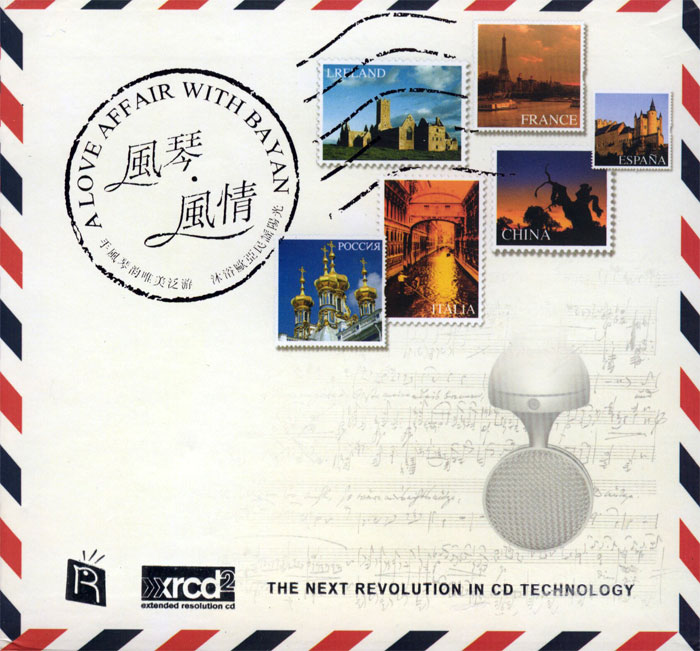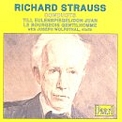Logowanie
Dlaczego wszystkjie inne nie brzmią tak jak te?
SpeakersCorner - OSTATNIE!!!!
RAVEL, DEBUSSY, Paul Paray, Detroit Symphony Orchestra
Prelude a l'Apres-midi d'un faune / Petite Suite / Valses nobles et sentimentales / Le Tombeau de Couperin
Samozapłon gwarantowany - Himalaje sztuki audiofilskiej
PROKOFIEV, Stanislaw Skrowaczewski, Minneapolis Symphony Orchestra
Romeo and Juliet
Stanisław Skrowaczewski,
✟ 22-02-2017
BARTOK, Antal Dorati, Philharmonia Hungarica
Dance Suite / Two Portraits / Two Excerpts From 'Mikrokosmos'
Samozapłon gwarantowany - Himalaje sztuki audiofilskiej
ENESCU, LISZT, Antal Dorati, The London Symphony Orchestra
Two Roumanian Rhapsodies / Hungarian Rhapsody Nos. 2 & 3
Samozapłon gwarantowany - Himalaje sztuki audiofilskiej
Winylowy niezbędnik
ClearAudio
Cartridge Alignment Gauge - uniwersalny przyrząd do ustawiania geometrii wkładki i ramienia
Jedyny na rynku, tak wszechstronny i właściwy do każdego typu gramofonu!
ClearAudio
Harmo-nicer - nie tylko mata gramofonowa
Najlepsze rozwiązania leżą tuż obok
IDEALNA MATA ANTYPOŚLIZGOWA I ANTYWIBRACYJNA.
Wzorcowe
Carmen Gomes
Celebrating the art and spirit of music - vol. 5 - Reference Songs
- CHCECIE TO WIERZCIE, CHCECIE - NIE WIERZCIE, ALE TO NIE JEST ZŁUDZENIE!!!
Petra Rosa, Eddie C.
Celebrating the art and spirit of music - vol. 3 - Pure
warm sophisticated voice...
SAMPLER - STS DIGITAL, Gregor Hamilton
Celebrating the art and spirit of music - vol. 2 - Love songs from Gregor Hamilton
...jak opanować serca bicie?...
SAMPLER - STS DIGITAL
Celebrating the art and spirit of music - vol. 1 - Leonardo Amuedo
Największy romans sopranu z głębokim basem... wiosennym
Lils Mackintosh
Celebrating the art and spirit of music - vol. 4 - A Tribute to Billie Holiday
Uczennica godna swej Mistrzyni
STRAUSS R.
Richard Strauss conducts Till Eulenspiegel, Don Juan
- I. DON JUAN (Tone poem) Op. 20
- 2. TILL EUKENSPIEGELS LUSTIGE STREICHE
- LE BOURGEOIS GENTILHOMME (Der Burger als Edelmann - Suite op. 60)
- 3. OVERTOURE TO ACT ONE
- 4. Minuet
- 5. The Master-At-Arms
- 6. Entry and Dance of the Tailors*
- 7. Lully Minuet*
- 8. Courante*
- 9. Entry of Cleonte
- 10.Prelude to Act Three
- II.The Dinner
- STRAUSS R.
Richard Strass's greatness as a composer has tended to obscure the fact that he was one of the most important conductors of his day. Fortunately his art as a performer has been preserved by the gramophone, but his recorded legacy is still for some curious reason greatly undervalued. Strauss entered the recording studio for the first time in 1917 to make a number of pre-electric recordings, and his last recordings were made in 1944, when as an octogenarian he recorded a number of his own works on an early tape machine with the Vienna Philharmonic Orchestra. During theintervening years he recorded the majority of his orchestral works, some of them on more than one occasion, and in the late 1920s he also recorded for Polydor the last three symphonies by his beloved Mozart, plus Beethoven's Symphonies Nos. 5 and 7, and overtures by Mozart, GI tick, Cornelius, Weber and Wagner. This was only a tiny fragment of his large orchestral and operatic repertoire, and in the normal course of events he would no doubt have gone on to make more frequent visits to the recording studio during the early 1930s. But Germany's economic chaos and then her political changes put paid to that. During the pre-war Hitler era Strauss made just one recording, in mid-1933, and it was only in 1940/41 that he resumed operations in the studios when he conducted the Bavarian State Opera Orchestra and the Bavarian State Orchestra in several of his own works. Strauss was already aged 53 when he first conducted for the gramophone. He had then been a professional conductor for 32 years. His first experience in front of an orchestra was a great ordeal, when on 18 November 1884 he was called upon to direct members of the famous Meiningen Court Orchestra in the first performance of his Serenade for Thirteen Wind Instruments. Not only had he never handled a baton before, but he was given no rehearsal for this nightmarish experience. Somehow he struggled through, and a few months later, when still only 21 years old, he was invited by Hans von Wilow, the Meiningen Orchestra's chief conductor, to become his assistant. In lateryears Strauss acknowledged the enormous benefit it had been for him to be able to work with such a fine musician, and he quickly learned his art. When von Bulow was away he had the chance to work with Brahms, and it was a disagreement between Brahms and von Billow which led to the latter's resignation from the Orchestra. Strauss now found himself at the head of the Meiningen Orchestra, but after only a few months he accepted an offer to become third conductor at the Munich Royal Theatre, where his father played the horn in the orchestra. Soon Strauss was receiving invitations to conduct in various other centres, and in the summer of 1889 he worked at Bayreuth. Later that year he moved to the Weimar Opera House, where he in 1893 conducted the first performance of Humperdinck's Hdnsel and Gretel. In 1894 he conducted the first performance of Mahler's First Symphony, and after von Billow's death succeeded him as conductor of the Berlin Philharmonic Orchestra. It had been a meteoric career so far, but Strauss was not quite experienced enough for such a prestigious appointment, and after disappointing the critics, especially in the premiere of Mahler's Second Symphony, he was replaced after just one season. Strauss returned to Munich, this time as first conductor, and then in 1898 he was appointed joint first conductor (with Karl Muck) at the Berlin Court Opera. By then he was established as one of Germany's preeminent conductors, and his long stay at Berlin was punctuated by a great many conducting assignments at home and abroad. Strauss's final appointment was as codirector (with Franz Schalk) of the Vienna State Opera, from 1919 until 1924. During his early years was noted as an interpreter in the old romantic mould, and his gestures on the rostrum were expressive and extravagant. But then he became, with Muck and Weingartner, one of the first apostles of the modern school. He refined his conducting technique, and developed what George Szell described as a "very small clickety, precise beat with always another little upbeat inside his wrist". His aim was a strong sense of line and balance, clarity of rhythm and an objective approach to the score. In his own music, as we hear on this disc, this method brought rich dividends of tension or feeling in his performances, but a wonderfully pure, elegant and precise means of expression. Modern conductors, listen and learn! Strauss's friend Mahler left just one or two inadequate piano rolls as the barest hint of how he might have conducted his own music. But in the case of Richard Strauss we can hear exactly how he wished his music to be performed. It is n fact one of the major wonders of the gramophone that we have such an extensive legacy of orchestral recordings by a great romantic composer who was also a great conductor. Alan Sanders

























